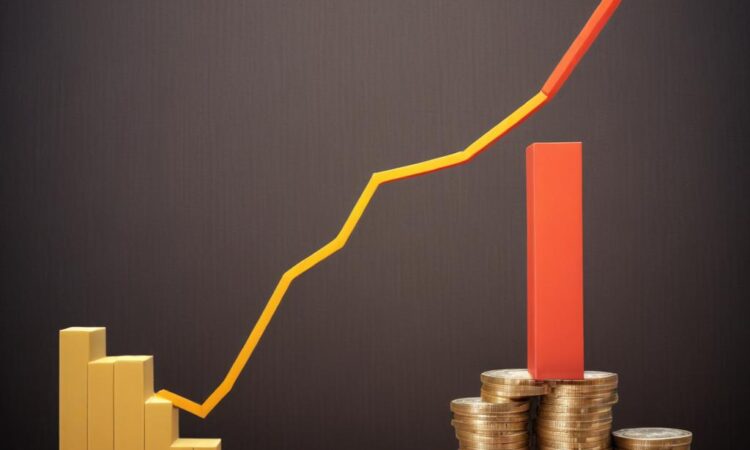Inflation and Interest Rates: The Impact on Businesses and Consumer Spending
The global economy is currently grappling with a confluence of economic forces, most notably rising inflation and interest rates. This dynamic duo has profound implications for both businesses and consumers, influencing their spending habits, investment strategies, and overall economic well-being. This article delves into the intricacies of this complex economic landscape, exploring the impact of inflation and interest rate hikes on various facets of our economic ecosystem.
The Dynamics of Inflation
Inflation, the persistent increase in the general price level of goods and services, is a multifaceted phenomenon driven by a complex interplay of factors. While a moderate level of inflation is often seen as a sign of a healthy economy, runaway inflation can wreak havoc on purchasing power, erode savings, and trigger economic instability.
The current inflationary surge has been attributed to several key factors, including:
- Supply Chain Disruptions: The COVID-19 pandemic has significantly disrupted global supply chains, leading to shortages of essential goods and services, which in turn drives up prices.
- Increased Demand: Government stimulus measures and pent-up demand following lockdowns have led to a surge in consumer spending, outpacing supply and pushing prices higher.
- Rising Energy Prices: The war in Ukraine has significantly impacted global energy markets, driving up energy prices and contributing to broader inflationary pressures.
- Labor Shortages: A tight labor market with a shortage of skilled workers has led to wage increases, which can contribute to higher prices as businesses pass on these costs to consumers.
Interest Rates: The Countermeasure
Central banks around the world have responded to rising inflation by increasing interest rates. This monetary policy tool aims to curb inflation by making borrowing more expensive, thereby slowing economic growth and reducing demand for goods and services.
Higher interest rates can have a significant impact on businesses:
- Increased Borrowing Costs: Businesses that rely on debt financing will face higher interest payments, potentially impacting their profitability and ability to invest in growth.
- Reduced Investment: Higher interest rates can make capital investments less attractive, discouraging businesses from expanding or investing in new projects.
- Impact on Debt Repayment: Businesses with existing debt may find it more difficult to meet their repayment obligations as interest rates rise, potentially leading to financial distress.
Consumer Spending in a High-Inflation Environment
Rising inflation and interest rates have a profound impact on consumer spending. The erosion of purchasing power due to higher prices forces consumers to make tough choices, prioritize essential needs, and potentially cut back on discretionary spending.
Here are some key implications for consumers:
- Reduced Real Income: As inflation outpaces wage growth, consumers experience a decline in their real income, leaving them with less disposable income to spend.
- Shifting Consumption Patterns: Consumers may prioritize essential goods and services, reducing spending on non-essentials and seeking out cheaper alternatives.
- Increased Savings: Higher interest rates can incentivize consumers to save more, as they can earn a higher return on their savings.
- Debt Management: Rising interest rates can make it more expensive for consumers to manage existing debt, potentially leading to financial strain.
The Balancing Act: Navigating Economic Uncertainty
The current economic landscape presents a complex challenge for policymakers, businesses, and consumers alike. While inflation is a significant concern, aggressively raising interest rates to curb it could stifle economic growth and lead to job losses. Policymakers face the delicate task of striking a balance between controlling inflation and promoting economic stability.
Businesses must adapt to the changing economic environment by:
- Cost Management: Implementing cost-saving measures, exploring alternative supply chains, and seeking ways to improve operational efficiency.
- Price Optimization: Strategically adjusting prices to maintain profitability while remaining competitive in the market.
- Diversification: Expanding into new markets or product lines to reduce reliance on single sources of revenue.
- Strategic Partnerships: Collaborating with other businesses to share resources, expertise, and risk.
Consumers can navigate the inflationary environment by:
- Budgeting: Creating a realistic budget that prioritizes essential expenses and tracks spending habits.
- Saving: Building an emergency fund and seeking opportunities to save for the future.
- Negotiating: Exploring ways to reduce expenses, such as negotiating lower interest rates on debt or seeking price reductions on goods and services.
- Financial Literacy: Increasing financial knowledge to make informed decisions regarding spending, saving, and investing.
The Road Ahead: Uncertainty and Adaptation
The future economic landscape remains uncertain, with inflation and interest rates continuing to exert their influence. However, by understanding the dynamics at play and adapting to the changing environment, businesses and consumers can navigate these challenges and position themselves for success in the long run.
The current economic climate necessitates a renewed focus on responsible spending, strategic financial planning, and adaptability in the face of uncertainty. By embracing these principles, we can weather the storm and emerge stronger on the other side.

